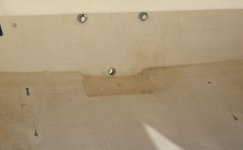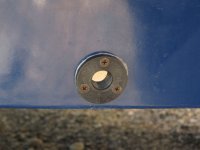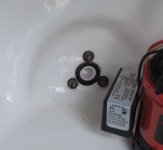ssobol
Active member
- Joined
- Oct 27, 2012
- Messages
- 3,668
- Reaction score
- 23
- C Dory Year
- 2008
- C Dory Model
- 22 Cruiser
- Vessel Name
- SoBELLE
I have noticed that the drain plug (brass threaded fitting) for my CD-22 is located a little higher than the "sump" in the back of the boat between the fuel pumps. With the plug out, this allows about 1/2 inch of water to remain in the sump most of the time (the water is not high enough to be effectively removed by the bilge pump, the only way to remove all the water is with a sponge). Since water often remains there, any stuff that remains in the water (usually leaves) breaks down into a gross mess that gums up the bilge pump located there. When it is cold the water in the sump can freeze possibly damaging the bilge pump.
This leaves me with three options that I can think off.
- fill in the sump so that the bottom of the sump is level with the bottom of the plug so that all the water will drain out. This will reduce the volume of the sump quite a bit and cause what ever water there may be back there to flow around a bit more.
- move the position of the current drain plug. This will involve patching and filling the transom and then drilling a new hole for the drain plug.
- seal the existing drain plug in place and then install a second plug at the correct position to allow all the water to drain from the sump. This will require drilling the transom, but will not involve filling an existing hole. The boat will just appear to have two drain plugs.
My current thought is to simply add a second drain plug in the correct position and seal the existing one.
Any thoughts?
This leaves me with three options that I can think off.
- fill in the sump so that the bottom of the sump is level with the bottom of the plug so that all the water will drain out. This will reduce the volume of the sump quite a bit and cause what ever water there may be back there to flow around a bit more.
- move the position of the current drain plug. This will involve patching and filling the transom and then drilling a new hole for the drain plug.
- seal the existing drain plug in place and then install a second plug at the correct position to allow all the water to drain from the sump. This will require drilling the transom, but will not involve filling an existing hole. The boat will just appear to have two drain plugs.
My current thought is to simply add a second drain plug in the correct position and seal the existing one.
Any thoughts?



